When board members are asked what they’ve gained personally from their board experience, they first and foremost talk about making a difference and having an impact. Serving as a board member often adds another level of meaning to their lives, through the new people and communities they connect with.
There’s another important, though perhaps less-noted value. It’s the opportunity to develop and strengthen leadership and management skills by taking on challenges in an environment that allows for taking risks that might not be acceptable in their professional lives. For example:
- A financial professional leading a finance committee and facilitating meetings that include board members without deep financial experience
- A dentist asked to chair a board and to take on the responsibilities of motivating the board and partnering with the executive director
- A marketing professional asked to cultivate an important donor
Board members can strengthen their ability to work with a team, see issues from different perspectives, and reach decisions by consensus. They learn how to represent an organization, speak about it passionately, develop relationships and obtain important resources.
Teamwork
Teamwork challenges most of us. It requires us to really listen to our peers’ opinions…and value them! It requires putting the group’s priorities ahead of our own and dealing with personalities we might otherwise avoid. We generally join boards because of the cause, not the team, and then may have to stretch to learn how to work with the team we’ve joined.
One of our favorite examples of the value of being part of a team comes from a conversation recorded in “The Boys in the Boat” when George Pocock told one of the members of the crew that won the 1936 Olympics:
“When you really start trusting those other boys, you will feel a power within you that is far beyond anything you’ve ever imagined. Sometimes, you will feel as if you have rowed right off the planet and are rowing among the stars.”
The Value of Fundraising
Central to the work of the board is the cultivation of potential donors, and yet this is often the most difficult for board members. Many come with little experience. Most fear it. The hardest work however is often the work that teaches us the most. Actively engaging in fundraising provides board members the opportunity to develop important skills they can use elsewhere.
Key to being a great cultivator is developing a case statement – or story – that is genuine to the teller. This is not an “elevator pitch” but rather a story about the organization that reflects its personal value to the teller. This work leads inevitability to strengthening written and communication skills that are genuine.
Before reaching out to a donor, the board member must conduct some research and strategize about how to convincingly propose a meeting and then to plan how they’d like the meeting to unfold, the questions they will ask, what they will need to learn, and their goal for the meeting.
Think about how much better a board member will be at networking, communicating, planning, and persuading, after having had a few of these cultivation conversations.
Enter the Asking Styles
The Asking Styles were developed by Brian Saber (and Andrea Kihlstedt) to help board members and staff better understand themselves as fundraisers. The Styles use the basic extrovert/introvert and analytic/intuitive personality variables to assign participants to one of four Asking Styles based on their personality strengths.
Find your Asking Style
https://quiz.askingmatters.com/
What We Can Learn from the Styles
Receiving the Asking Styles report in itself provides great value to the board. By mapping them out on the Asking Styles Grid, one can recognize the diversity of board member personalities and how to best use everyone’s strengths and adapt to their limitations.
To further understand the strengths and challenges of each Style, boards can conduct workshops where members have 1:1 and group conversations exploring how to best work together. These exercises deepen our understanding of our own Styles and provide an experiential base for having similar conversations with professional colleagues.
Here are some questions that might be asked of the group:
- Is everyone’s opinion being heard? How might the Asking Styles impact board discussions and what steps might the board take if there are issues?
- Does the board value both the analytical and intuitive approaches?
- What is your board chair’s Style? Does it impact how the board is led and meetings are run?
- Does any Style dominate? What impact does that have on how the board functions? How might the board address that?
Each board member can provide valuable fundraising contributions in a way that does not require them to be the imagined prototypical fundraiser. All board members can tell compelling stories from their experience and passion. All can develop relationships successfully in their own way and decide on the most effective way to partner with a fellow board member who has a different Style.
Conclusion
Board service can provide many rewards and benefits beyond making an impact in the world. Good board service builds a whole range of skills to take back out into one’s life. The Asking Styles provide a roadmap for approaching teamwork and fundraising which ensures one’s board experience will be the best possible…and that board members will actually fulfill their fundraising role. The more board members learn through board service, the stronger the skills they take out into the world.
This is a critical time in our history as we finally begin to acknowledge our national failure to take seriously our commitment to equity and the strength we derive from our diversity. Implementing the values of Diversity, Equity and Inclusion carries some special challenges for Boards of Directors. Specifically they will need to:
- Commit to the importance of implementing these values by including members who bring diverse perspectives
- Create a Board environment that will genuinely welcome and include members who, by definition, will bring different points of view.
Developing a commitment to change
It is a legal responsibility of the Board to steward the achievement of the organization’s Vision and Mission, This requires that it understand and value the interests and needs of its diverse stakeholders in the achievement of that vision and mission.
While having diverse points of view on a Board is finally receiving the attention it deserves, it is what Boards should always have been doing to fulfill their legal Duty of Obedience.
“The board is responsible for assuring that the organization acts in compliance with its mission, By Laws and legal responsibilities.”
The first step is for the Board to have conversations within itself to understand the various community segments that have legitimate interest in the achievement of the mission and how it can bring their points of view into its work (Stakeholders include clients, the community served, staff, funders, donors, government, etc.)
The Board needs to identify the value of having a diverse board and the points of view that are needed. From there it can develop a strategy to identify candidates whose lived experiences will enable them to best understand and express those other points of view.
A preface to this work could be to establish an expectation that Board members interact on a regular basis with programs, staff, community, supporters and individuals served to understand their interests and needs.
The commitment to diversity should be expressed in a recruitment strategy with specific objectives. The Board may also need to consider whether to adopt term limits in order to achieve its diversity objectives
Developing a culture of inclusion
To make diversity effective, the Board will need to develop practices that assure the inclusion of new voices in its work. Development of these practices may need to begin with making sure that there is true inclusion of the diversity that it already has.
There may also be a need to strengthen the board as a team by providing opportunities for board members to know one another personally.
Boards may need training to help them understand the challenges to genuine inclusion and to be able to evaluate the inclusion experience of board members.
Conclusion
Doing this work will make organizations stronger, more responsive and true partners in our quest to achieve a more just society. It will also deepen the commitment of board members to one another and to the organization they serve.
These culture changes will be challenging and will take hard work but, as is said, “if it was easy, they wouldn’t need us.”
Coaches develop by learning from their players. They watch and learn by reflecting on the skills and qualities that underlie their player’s success.
In this newsletter, I’d like to share some of what I have been learning from my clients.
Developing Rules of the Road
The leadership of one board found itself frequently slowed down by disagreements over the spheres of authority of the various committees, the managerial role of the Executive Committee and the respective decision making authority of the Board and the Executive Director.
A common problem, but they found an uncommon solution. They decided to hold a 4 hour meeting to address the issues explicitly.
The first step was a survey to test the range of agreement or disagreement with a set of explicit board management rules. The meeting would focus on addressing the concerns that underlie areas of disagreement and on exploring what the rules would mean in practice.
The following is a sample of the rules adopted:
The management role of the Executive Committee
- The Executive Committee will work with the Executive Director to develop the board meeting agenda.
- The Executive Committee will coordinate and support the work of the Committees. A member of the Executive Committee will be assigned as liaison to each Committee.
Board Committees
- Matters of significance should be referred first to a committee for analysis before being considered by the board.
- Deference should be given to the committee recommendations unless there are significant concerns as to the impact on the achievement of the mission or organizational sustainability.
- There should be an annual board planning meeting to determine the committee objectives by the end of June.
- Committee requests to the staff liaison that might require significant time should be cleared with the staff member’s direct supervisor.
Board members as volunteers
- When board members are fulfilling a volunteer role, they should take directions in operational matters from staff.
Board member evaluation
- There should be a process to assess the overall contribution of each board member based on board adopted expectations, as a basis for making a recommendation for asking the board member to serve an additional term.
Board meetings
- The board should utilize a “consent agenda” where matters that are purely for information are sent in advance with a note stating that they will not be discussed unless a board member communicates a question in advance.
Board values
- Discussions should focus on finding solutions rather than attributing blame.
- Attention and respect should be given to each speaker. Side conversations should be avoided.
- Board members will respect and support decisions of the board even if they had disagreed.
Conclusion
This process has taught me that apparent board dysfunction may simply be the result of board members having different assumptions about how to best operate. Conflict can be resolved by taking the time to identify and discuss the different assumptions and to look for opportunities to reconcile them. Once these assumptions are brought to the surface, agreement may be surprisingly easy.
The Founding Period
Virtually every non-profit organization began in the same way. An individual or a small group identified a need and decided to form an organization to address that need. A board of directors was recruited, commonly consisting of friends, family and supporters. Board members tend to view themselves as supporters of the founder. Clear expectations are generally not provided.
The founder commonly assumes the position of Executive Director or “President”. Their business cards will often identify them as “founder.”This designation does not carry any additional legal authority.
Since there is minimal staff, board members may be asked to serve as volunteers in every area, from financial management to delivering programs.
Board meetings during this period consist largely of reports on the operational work of the Executive Director or of board members.
The Challenges
The commitment of board members to fill volunteer roles is necessary in the start-up phase. Once the organization is able to hire staff, however, continuation of this structure can lead to governance challenges.
1) There is no clear understanding of the distinction between the authority of the board and that of the Executive Director, including:
- Which decisions that should be made by the Executive Director and which are the responsibility of the board.
- The authority to bring on new board members
2) With the addition of paid staff, board members may not want to give up the volunteer activities that provided great satisfaction. If they do relinquish those roles, they often assume that the board responsibility to provide “oversight” means that they are to “supervise” staff.
3) As “supporters” of the ED, the board will not:
- Provide for an annual evaluation of the Executive Director
- Raise challenging issues regarding organizational direction
- Actively raise funds for an organization that they do not “own”
Solutions
Strengthening the board requires the same incremental and consistent work as does building strength and skill for any professional, physical or other goal. The entire team (ED, Board Chair and Board) must be committed to this goal.
Some hands-on volunteer work by board members will often continue while the board is building a foundation for the future.
The Role of the ED
The ED must take an active role as coach for the Chair and for Board leadership. This requires:
- Regular 1:1 in person meetings with the Chair
- Engagement with an Executive Committee/leadership team
- Annual 1:1 meeting with each board member
The Role of the Chair and the Executive Committee
The Executive Committee should meet between board meetings to take responsibility for managing the board, including:
- Creating board meeting agendas
- Committee coordination, oversight and support
- Organizing an annual board planning retreat to establish organizational and board objectives
- The Executive Committee should not act as a decision maker except when a decision cannot wait until the next board meeting.
Board Meetings
- Board meetings should utilize a bifurcated agenda that separates board governance decisions from volunteer implementation work. This:
- Assures that the governance matters are addressed
- Clarifies the distinction between governance and implementation and the difference between deliberation and voting on fiduciary matters and implementation problem solving
- Governance questions (Budget, Financial oversight, Board member elections, etc.) should have been previously addressed by a committee that presents a recommendation to the board
- Routine reports are sent in advance and not discussed unless a question is raised in advance
Committees
A small board cannot establish all of the needed committees. It is however important to lay the foundation for a full committee structure by establishing one or two committees to develop committee management practices.
There should be a plan to establish the remaining committees and for how the governance responsibilities will be met in the interim.
There are two fundamental reasons your nonprofit board doesn’t fundraise; either of which may an obstacle for your board:
- They don’t really care enough
- They are too anxious
Here, I’ll address the second reason:
So, what’s making your board so anxious about fundraising? When asked, board members universally provide three reasons:
- Fear of damaging a relationship
- Fear of rejection
- Reciprocity
There is a fairly simple way to help overcome the first two.
Board members need to be able to find out how their friends will react to the mission they are connected with when they are not asking for money. This does not require a crystal ball. It simply involves encouraging board members to get into the habit of introducing your organization and your work in ordinary conversation.
Most of us are always searching for topics to keep a conversation going. Why not use some good stories about your impact?
This does not mean giving an elevator pitch, but rather asking about the other person’s interests until you find a connection or concern that opens up an opportunity to tell a story about your organization. And that story is unique to each board member and based on individual experience and perspective.
This is the essence of sales: A sales professional will not introduce a product until they have identified a need.
As described in the post about Reason #1 for not engaging – not being connected to the mission – activities that strengthen board member connections to the mission will enable this by providing them with moving stories to tell.
The concern about reciprocity (quid pro quo fundraising) will diminish as board members learn to shift from a focus on soliciting small gifts to cultivating long-term donors.
Want to know more about reciprocity? Join us for a FREE webinar at 1 p.m. ET on Wednesday, December 12. We’ll discuss this and give you five key steps you can take to build a stronger fundraising team.
Save your spot today! Hurry, seats are limited!

There are two fundamental reasons your nonprofit board doesn’t fundraise; either of which may be an obstacle for your board:
- They don’t really care enough
- They are too anxious
Here, I’ll address the first: They don’t really care enough.
 Your board members joined your board because they believed in the change your organization is committed to (your vision) and how you make that change (your mission).
Your board members joined your board because they believed in the change your organization is committed to (your vision) and how you make that change (your mission).
Unfortunately, while that belief in your vision and mission continued on a cognitive level, not enough has happened to create the emotional connection necessary to motivate them to use their networks to cultivate potential donors.
They came for the vision and the mission but have lost touch with it. Their time is spent attending board meetings and working on committees. Little time is spent experiencing the mission and accumulating the stories about your impact that will motivate them and potentials donors.
This situation, however, is not difficult to remedy.
Bring the mission into board meetings
Every board agenda should include an item relating to the mission, e.g. a staff presentation about exciting results, a client speaking about the impact on their life, a speaker from a related field, etc. These can be brief and should, over time, cover the full range of your programs.
Bring board members to the mission
Board members should be expected, encouraged, and enabled to visit programs where they can speak with staff and clients, and, whenever possible, engage in volunteer activities. There should be time set aside on the board meeting agenda for members to report on what they learned and to share stories about program impact.
Where the organization has multiple program areas, each board member can be assigned to deepen their knowledge about one program area each year through site visits and conversations with senior staff
Board members joined because they care. Give them something concrete to care about.
Want to know more about why board members are too anxious to fundraise? Subscribe now and we’ll email you about the second reason boards don’t fundraise.
Are you banging your head against the wall trying to get your board to help fundraise? It doesn’t have to be like that! Join Asking Matters President Brian Saber and Asking Matters Board Expert Michael Davidson for a FREE webinar to learn five key steps you can take to build a stronger fundraising team.
Save your spot for this FREE webinar at 1 p.m. ET on Wednesday, December 12. Hurry, seats are limited!

Thoughts from the Coach Boat: What Boards Can Learn From Youth Programs
I recently attended a presentation by Youth INC on a five-year study of the characteristics of programs that are most successful in engaging the active participation of young people. Effective engagement is achieved by creating an environment where participants experience being valued as individuals and are genuinely engaged in decision making about matters that are important.
The four practices that effectively engage young people are directly applicable to engaging board members.
1. Building relationships
- Having one-on-one conversations where time is invested by staff to communicate interest in the lives of each participant
2. Discovering interests
- Incorporating their interests in the design of group projects
3. Providing opportunities to make decisions
- Engaging participants in decision-making about the goals and methodologies of their work and in the monitoring of progress
4. Communicating high expectations
- Creating an environment and culture that communicates high-quality work, and providing stretch assignments
What can boards do to become effective teams?

- Create opportunities for board members to find time to get to know one another informally
- Engage board members in determining concrete objectives for their individual and collective work
- Assure that the board is an honest partner in addressing the significant challenges for the organization: the good, the bad, and the ugly
- Establish high expectations for the contributions of the board to add value to the achievement of the mission
Conclusion
We may be older but, in some ways, we are not really that different.
To learn more about Michael and his many accomplishments in the field, check out his Asking Matters Expert page and visit his website, boardcoach.com.

 like us on facebook
like us on facebook follow us on twitter
follow us on twitter connect on linkedin
connect on linkedin


 Describing the executive director as a “CEO” suggests that the organization being envisioned is a large top down corporate-like entity. More importantly, while this “hub and spoke” model of leadership is certainly possible and allows the executive director to control where input is coming from, it does not have the benefit of a team-thinking process that many, even in the corporate sector, have found to be valuable.
Describing the executive director as a “CEO” suggests that the organization being envisioned is a large top down corporate-like entity. More importantly, while this “hub and spoke” model of leadership is certainly possible and allows the executive director to control where input is coming from, it does not have the benefit of a team-thinking process that many, even in the corporate sector, have found to be valuable.


